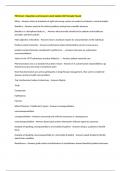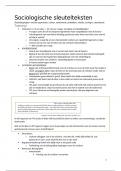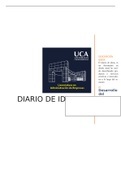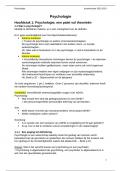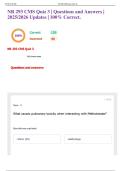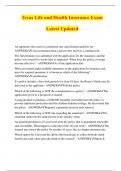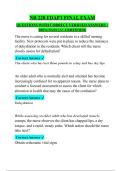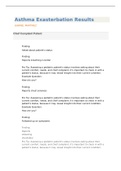My name is Marwa and I am a newly technical assistant for checalequip, which in this assignment I
will carry out different titration techniques such as titration using sodium carbonate, titration of HCl and
NaOH using the indicator, titration with HCL and NaOH using a Ph metre and finally colourimetry.
Therefore, I will demonstrate skill in a range of practical procedures and techniques and I will also
explain the techniques, analyse and evaluate the result and suggest an improvement.
Titration
A titration is a method of determining the concentration of an unknown solution by comparing it to a
known concentration solution. Although the titration experiment is used in science and education to
determine the proper concentration of base is used to neutralise the acid, it can also be used in daily
life for the food industry, medicine, biodiesel production and aquarium water testing. For example,
iteration is a frequently used analytical technique in the food industry. It enables food manufacturers to
calculate the amount of reactant present in a sample. It can be used to determine the amount of salt
or sugar in a food, as well as the concentration of vitamin C or E, which affects the colour of the
product. This is because titration is an important experiment that can be used to identify oil, fats and
similar substances because it can determine the length of the fatty acid chain in a lipid. Moreover,
titration is a method used by pharmacists to produce a desired combination of medications. Titration is
a technique used by doctors to determine the proper quantity of several drugs in an intravenous drip.
Titration is also important in the monitoring of blood glucose levels in diabetic patients, as well as
pregnancy testing and other urinalysis uses. In the development of biodiesel, titration is used to
measure the acidity of waste vegetable oil, which is one of the key constituents. The pH of the entire
batch can be assessed and the amount of base needed to achieve the desired pH can be estimated
by testing a tiny sample using pH paper.
Additionally, in both marine and freshwater aquariums, titration is being used to assess the
underwater environment. To assure the survival of marine life maintained in aquariums, properties
such as water pH and ammonia, nitrates, and nitrites concentrations are analysed and controlled.
Therefore, there are different types of titration which are used to identify the concentration of the
unknown solution such as:
● Acid and bases titration
● REDOX titration
● Precipitation titration
● Complexometric titration
Furthermore, there are a variety of factors that affect the titration such as misreading the volume of
solution, mistaken concentration value or poor technique. The factors affecting titration include:
➔ Misreading the volume
The volume of solution used must be precisely measured in order to be more accurate. For example,
misreading the volume of burette can affect the titration result. From above the volume of solution
appears to be lesser, while from below the volume of solution appears to be higher. Moreover, looking
in the wrong spot is also another form of measurement inaccuracy. This is because a concave curve
is formed by a solution which is also known as the meniscus line and the volume is measured at the
bottom of the curve. The volume measurement will be inaccurate if the reading is taken from the
upper regions of the curve. Therefore, to improve the error in the titration experiment is by reading the
volume of solution at eye level and at the right angle which makes the experiment more liable and
accurate.
➔ Concentration
The concentration error has a direct relationship with the measurement accuracy. Errors include
starting with improper concentration, which can happen due to chemical decomposition of fluid
evaporation. It's possible that the solution was made incorrectly or that contaminants were introduced
,into the solution, such as by using uncleaned equipment. Even the procedure of cleaning the
equipment, if done incorrectly, might have an impact on the concentrations of the solutions to be
analysed. This will affect the result because when carrying out the practical to make a standard
solution of sodium carbonate, it is important to measure specific amounts of sodium carbonate. E.g
1.3 gram of sodium carbonate Also, make sure to rinse the beaker once transferring the standard
solution into the volumetric flask so that all of the solutions have been transferred into the volumetric
flask. Moreover, it’s possible that the solution might be contaminated with other solutions. This is
because when carrying out the practical it’s necessary to rinse the equipment to make sure that there
is no remaining water to dilute the titrant.
➔ Indicator
Once the reaction between the two solutions has come to an end, the titration is completed. The
indicators that change the colour of the solution indicate when a reaction has stopped. This is
because the indicator may brighten in colour before entirely changing colour which means that the
wrong volume of the solution is being used to neutralise the acid. Therefore, when doing the titration
experiment make sure to add the solution drop by drop so that the colour changes are visible and
accurate volume is being used. In addition, using a white tile helps to make the colour change more
visible which can be done by placing a white tile underneath the conical flask. Moreover, overshooting
the endpoint would result in a greater value in the burette for the final volume reading, so the molarity
would be reduced if a large amount of solution is added to the conical flask. Therefore, once enough
acid (standard solution) is being added into the conical flask add drop by drop, to avoid overshooting
the endpoint.
➔ Improper calibration
Calibration is the process of modifying and checking the equipment to ensure that the results it
produces are correct. This is because it is possible to make mistakes when calibrating the equipment.
When starting the practical it is necessary to rinse the burette and the pipette as this helps to avoid
contamination because the burette will contain the same solution that has been rinsed with.
Additionally, the incorrect calibration is due to the weighing scale because when carrying out titration
practicals such as preparing standard solutions it is possible to calibrate incorrectly as this will lead to
wrong results.
➔ Endpoint of titration
The point at which the reactants have completed their reaction is known as the equivalence point at
which the proper amount of standard solution is reacted with the unknown concentration. Therefore,
when carrying out the practical it's important to add the right amount of standard solution.
Furthermore, the endpoint indicates when the equivalence point has been achieved. For example, the
solution will change colour when the titration reaches its endpoint. Moreover, the purpose of the
indicator is to show when the titration is complete and that enough standard solution has been added
to fully react with the unknown concentration.
, Part 1 preparation of standard solution
Titration is a technique for measuring the concentration of sodium carbonate in a solution containing a
given quantity of hydrochloric acid.The standard solution is produced to extract the known amount
which can be used to carry out the titration. However, there are several measures in place to assure
accuracy, such as calibrating the weighing scale, rinsing the equipment which increases the accuracy
of the experiment. This is because by raising the equipment it prevents contamination and accurate
results will be obtained, for example, when carrying out the standard solution I made sure that the
weighting boat, beaker and funnel is rinsed before using it.
Equipment:
- Volumetric flask
- Burette
- Funnel
- Beaker
- Pipette
- Distilled water
- Sodium carbonate
- Stand clamp (burette stand)
- HCL
- Pipette filler
Standard solution of sodium carbonate
Before starting the practical I made sure to prepare a standard solution of sodium carbonate. I started
out by rinsing the weighting boat to prevent contamination and placed the weighting boat on the
weighing scale and measured out 1.3 grams of sodium carbonate on a weighing scale. Next, I
transferred the sodium carbonate into the beaker making sure that it has been rinsed with distilled
water to avoid contamination. After transferring the sodium carbonate to the beaker, I cleaned the
weighted boat with distilled water and emptied all of the liquid into the beaker. Then I used a stirring
rod to mix the sodium carbonate with the distilled water. Once the sodium carbonate is mixed with the
distilled water, I transfer the standard solution into a volumetric flask using a funnel so that the solution
does not spill. I made sure to rinse the beaker and funnel three times with distilled water so any
remaining standard solution is transferred into the conical flask and doing this makes the experiment
more accurate. Finally, I filled the volumetric flask with distilled water until it reached the meniscus
line, then added drop by drop with a pipette so the solution didn't go over or below the meniscus line.
Calculation of sodium carbonate:
The mass of sodium carbonate is 1.3 gram and the relative molecular mass is 106. Therefore, I can
work out the number of moles in sodium carbonate by using the equation:
No. moles = mass / relative molecular mass
∴ 1. = 0.0123 moles
In addition, I can also workout the concentration of sodium carbonate because the moles of the
sodium carbonate is 0.0123 and the volume is 250㎤. Therefore, I uses the equation:
concentration = moles x volume
The volume of sodium carbonate is in ㎤ so I have to change the unit to ㍹, in order to convert the
units into ㍹ I divide the by 1000.


